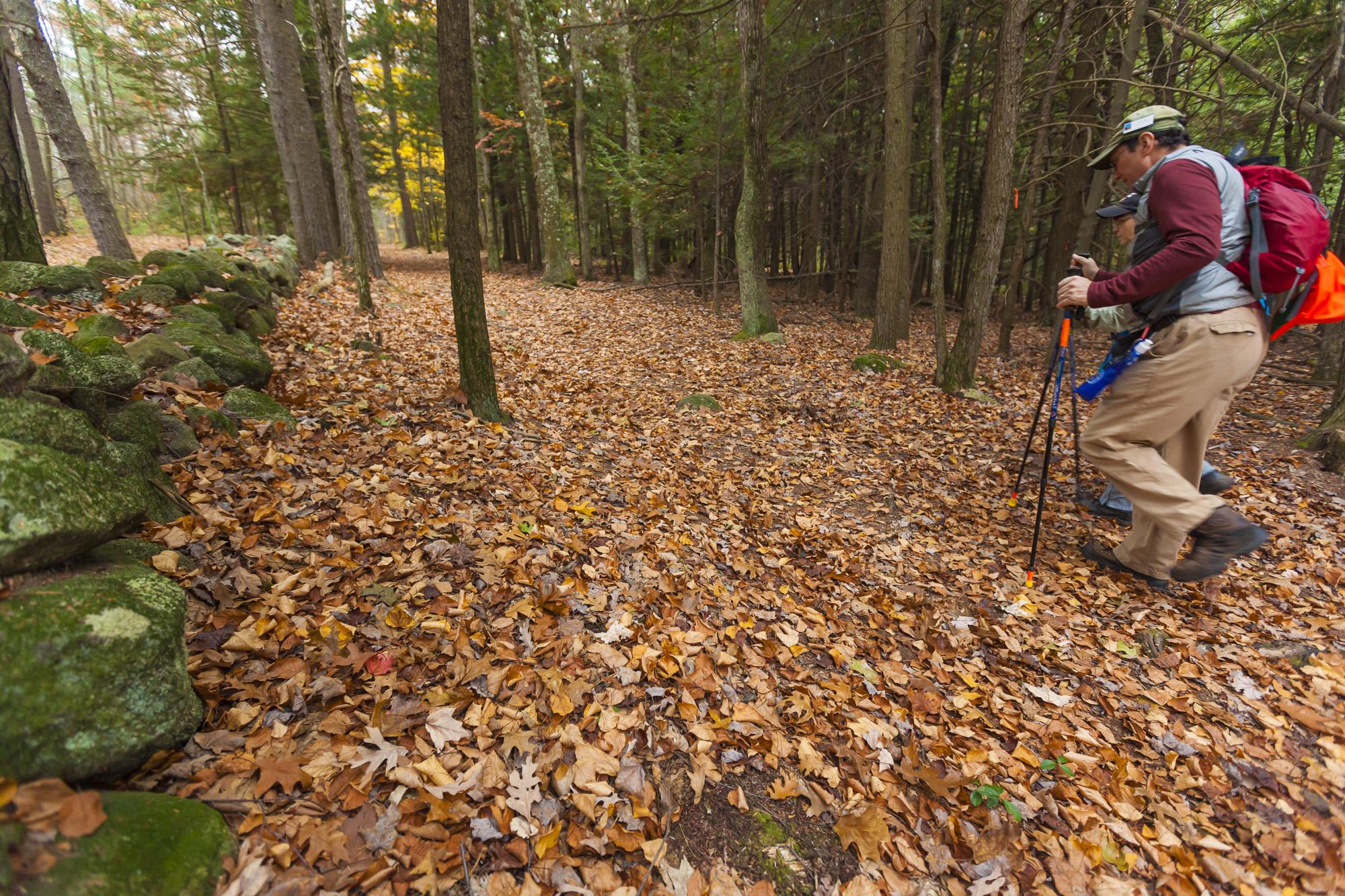(And How a Little Nature Can Fix It)

Volunteer land stewards Lise and John Bigl take a walk on the Forest Society’s Monson Center forest reservation in Milford and Hollis. To find a forest reservation near you where you can enjoy a restorative walk, visit www.forestsociety.org/reservation-guide. Photo by Jerry Monkman, Ecophotography
Last month I had occasion to spend a few days in Boston. Curious about the people I was with, I asked them where they lived (Back Bay to suburbia), what their commute was like (30-minute walk to 90 minute stress-fest each way), and how they liked living in a major metropolitan area. They, in turn, seemed fascinated by the fact that I live on a 100-acre Tree Farm in central New Hampshire not far from Lake Winnipesaukee. To a person, they said that I was “livin’ the dream”, and wished they could do the same.
Perhaps they were just being polite. Maybe the really would relish the “good life” in rural New Hampshire, even when it means fixing the tractor outside in the dark in January. Or maybe their brains were subconsciously seeking some needed relief from overstimulation in an unnatural setting.
Sixty percent of New Hampshire residents live in an urban environment. That may seem like a lot given that the Granite State is usually perceived as a rural state that places high value on its natural resources, having built two of its largest industries (forest products and tourism) on the strength of our woods, water and wildlife.
But it’s a third less than Massachusetts, where 92 percent of people have been subsumed by urban living. The two states are indicative of world-wide trends---in our age, more people live in cities than not, which is a relatively new development from the perspective of human evolution. By 2050, it’s estimated that 70 percent of the world’s population will be living in the concrete jungle.
This is arguably a good thing for our forests, which are usually allowed to stay as forests when we choose sustainable density of cities over the kind of suburban sprawl that fragments the natural landscape beyond recognition. Pavement does trees few favors.
But more than one study has shown that the city life has some serious downsides—in particular, for our brains. Researchers find that urbanization is associated with “increased levels of mental illness, including depression.” By other measures, city-dwellers are at greater risk of exhibiting anxiety disorders (21 percent increased risk) and mood disorders (39 percent increased risk).
Is it any surprise to learn that in Washington, D.C., 100 percent of the population resides in an urban environment?
Other studies have concluded that being in city affects our memory and self-control. Our brains apparently haven’t evolved to handle the overstimulation present on a city street, and as we attempt to figure out what we need to be wary of and what we can ignore, we exhibit stress in ways that we don’t when we are in a more natural setting. As long as that natural setting doesn’t include a hungry lion, I suppose.
But there is good news for those depressed, stressed-out urbanites. Further research is also showing that even brief exposure to natural surroundings can change our brains in a positive way. Stanford University graduate student Gregory Bratman and colleagues have been doing some work, the latest of which was published a few months ago, on the impact of a 90-minute walk in a natural setting on brain activity related to “morbid rumination”, which is associated with heightened risk for depression and other mental illnesses.
Rumination, or brooding, is when our minds are focused on going over and over all of the negative things in our lives. Activity in a part of the brain known as the subgenual prefrontal cortex is associated with brooding.
Bratman’s latest study found that “participants who went on a 90-min walk through a natural environment reported lower levels of rumination and showed reduced neural activity in an area of the brain linked to risk for mental illness compared with those who walked through an urban environment. These results suggest that accessible natural areas may be vital for mental health in our rapidly urbanizing world.”
Perhaps someday our brains will have evolved to do a better job of handling city life. And maybe cities will do a better job integrating natural surrounding amongst the built environment. In the meantime, the research provides all the excuse you need for a walk in the woods. The Forest Society has lots of places where you can do exactly that—check out our Forest Reservation Guide at www.forestsociety.org. And do your brain some good.
Jack Savage is the Executive Editor of Forest Notes, the magazine of the Society for the Protection of New Hampshire Forests. Email him at jsavage@forestsociety.org or follow him on Twitter @JackatSPNHF.
